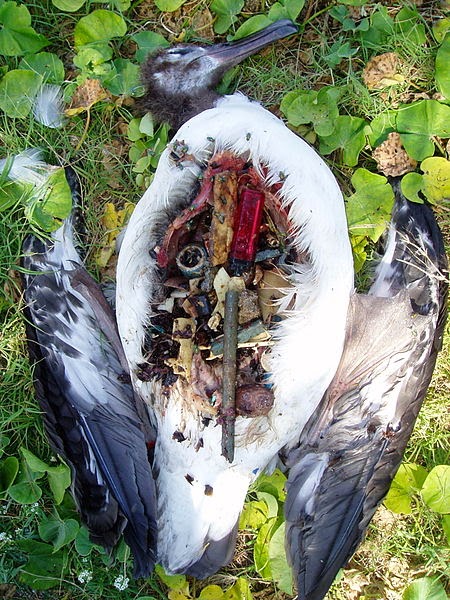- This post is the first in a series. The sequel to this post is What to Do About Plastic: Watermelon Pickles and String Too Short to Save.
I am increasingly troubled by the ubiquitous presence of something I used to take for granted: plastic.
I’m typing these words on a plastic keyboard, and watching them appear on a computer monitor that is largely made of plastic. At my left are a series of plastic notebooks I use to hold information on my work for my monthly meeting, and on my right a stack of DVDs I bought to show my classes in school. Plastic, plastic everywhere…
So, what’s the problem? Plastic can be recycled, right?
Well, sometimes yes, and sometimes no… and actually, even when the answer is apparently yes, it’s really no.
Here’s what I mean: most of us who care two pins for the planet are by now familiar with the recycling symbol, with a number in the middle of an ouroboros of arrows. Setting aside for the moment the problem of plastic without the little symbol (not recyclable by any definition) and whatever plastics are not recyclable in your area, the chief difficulty is this: that little ouroboros is a symbol of eternity, of the snake that can eat its tail forever. And that implied promise is kept on materials like aluminum, steel, and glass, that essentially can be recycled forever. It is not the case for paper, but whatever paper is unrecoverable after repeated recyclings can, at least, be digested by microorganisms and return to feed the soil from which it came.
Plastic is never recyclable in this way. At best, plastic downcycles–it is reduced to a less and less useful form, until it reaches, in the end, an unrecoverable, unrecyclable end point… which is, unlike the grey cardboard box or the brown paper bag, as indigestible to the microorganisms that maintain our ecology as is plutonium.
And it may, ultimately, be as toxic.
This is not good news.
So what happens to the plastic that is not recycled, or which reaches the nadir of its recoverability, whether as a discarded bit of polar-fleece or as a bit of composite deck lumber? It does reenter the ecosystem, sometimes as windblown bits of plastic bag that whisk along the roadways until they are caught in a high tree; are tattered by the wind and sun until they are stripped from the tree; are ultimately caught up in streams or stormdrains or rivers, and are swept into the oceans, where they can wind up in places like this:
.jpg) |
| Photo by Chris Jordan |
 |
| Photo: NOAA |
Right.
Sorry to depress everybody with dead animal pictures. Somehow, it’s hard for us to take things like the environment seriously unless we have something with eyes and a brain to empathize with, isn’t it?
I’ve been unable to confirm the claims I’ve found online that “nearly every seabird on the planet has plastic waste” in its gullet–but it is clear that dead birds, fish, and sea turtles all too often prove to have ingested plastic waste. Kilograms of it, in the case of large animals. Enough to cause death through starvation, intestinal blockage or puncture, and so on, in all too many cases.
But here’s the really bad news. That bit about the sea turtles and the birds? That’s the good news, environmentally speaking. Because, yeah, we are seeing species dying off at a rate unprecedented in human history and maybe even in geological history, but, at least in theory, species that become extinct can be supplanted by new species that evolve. And there is certainly one hell of a selection pressure in operation here, to select for turtles, birds, whales, and dolphins that know the difference between a floating bit of plastic and their next meal. So, while we may lose some beloved aquatic species, there may, someday, be more to replace them.
If we haven’t poisoned that entire ecosystem, of course.
Which is where the bad news really kicks in, because the dead sea turtles are the least of our problems with plastic. Plastic, you see, is really terrifying stuff: as far as we know, it will take geologic time to break down chemically: 500,000 to a million years. But it breaks down physically, into smaller and smaller bits, in a relatively short time–subject it to sun, water, weather, and it becomes tiny little particles.
This is not good news, even if it sounds like it is. To quote from one discussion of the often repeated (but little-supported) claim that plastic bags will degrade in “only” 500 years or so:
While polymers do indeed photodegrade, that doesn’t remove it from the environment. The big pieces simply become smaller. This is mostly a minor irritant on land (where microscopic polymers will just become another inorganic component of soil), but poses serious risks to marine life, who can’t distinguish indigestible polymer particles from food.
Thus marine organisms starve to death with guts full of styrofoam and PVC. This is bad enough when the creatures eating themselves to death are cuddly critters like sea turtles or pelicans, but as polymers degrade into microscopic bits the effect moves down the food chain, such that these particles are now replacing plankton. You can knock off the top of the food pyramid (turtles and pelicans) with little effect, but let’s think really hard about what happens when you kick out the base.
All of which leaves aside the aesthetic issue of areas of ocean the size of continents that consist almost entirely of rafts of plastic garbage.
Those, by the way, look like this:
But it’s not how they look that’s the truly horrifying thing. It’s how they act:
A study by the Japanese geochemist Hideshige Takada and his colleagues at Tokyo University in 2001 found that plastic polymers act like a sponge for resilient poisons such as DDT and polychlorinated biphenyls. Takada’s team found non-water-soluble toxic chemicals can be found in plastic in levels as high as a million times their concentration in water.
In other words, we are starving out, poisoning, and crowding out the base of the ocean’s food chain. Plastics are appearing in portions of our oceans at high enough densities to “smother marine life,” and take the place of the plankton that feed all the other life forms of the sea–and which, taken as a whole, produce half our planet’s oxygen.
Worried yet?
I am… an that’s without taking into account the fact that, while too stable to break down naturally or fully by any biological process, plastics are also too unstable not to leach out vast quantities of toxic components used to stabilize, tint, or change various properties of plastics for short term use. So readily do plastics release poisons into the environment, in fact, that we are coming to understand that even in the short lifespan of a disposable plastic water bottle, it may well be leaching carcinogenic compounds into the liquids we consume. In fact, ironically enough, plastics break down so easily that museum curators, wanting to preserve some of the many pop-culture artifacts made from plastic in this century, find it exceedingly challenging to do so.
The problem…is that many of these components aren’t chemically bound to the polymer chains. Thus, over time and under certain conditions, the additives can ooze out of the plastic. Studies suggest that many of these substances–including pthalates, flame retardants, and bisphenol A–leach from consumer products and cause significant health problems for humans.
Loss of these additives doesn’t help the plastic, either.
I guess that’s a concern when you’re trying to preserve a forty-year-old Barbie doll. But, overall, I’d have to say its far more of a concern when you’re considering thousands upon thousands of tons of this material, in the soil and in the oceans, creating biological deserts possibly for millenia to come.
Oh, yes–and did I mention that highly toxic processes involved in their production, as well?
We can’t be having with this, people…
So what’s to be done? Well. Let’s talk. More tomorrow.
For more information, please see:
A Comparison of Plastic and Plankton in the North Pacific Plastic Gyre.
Marine Birds and Plastic Pollution.
Plastic Ocean.
Polymers are Forever.












